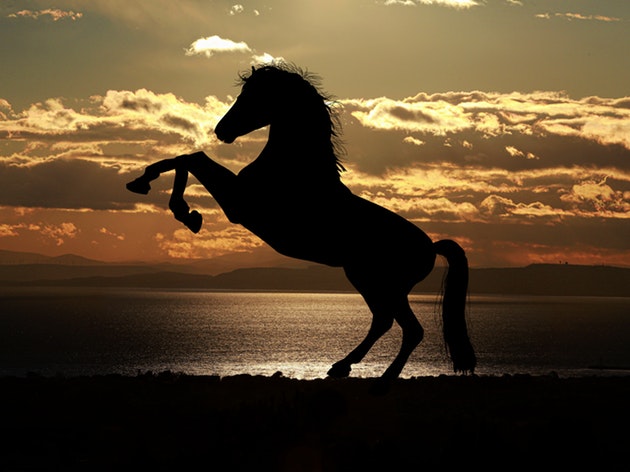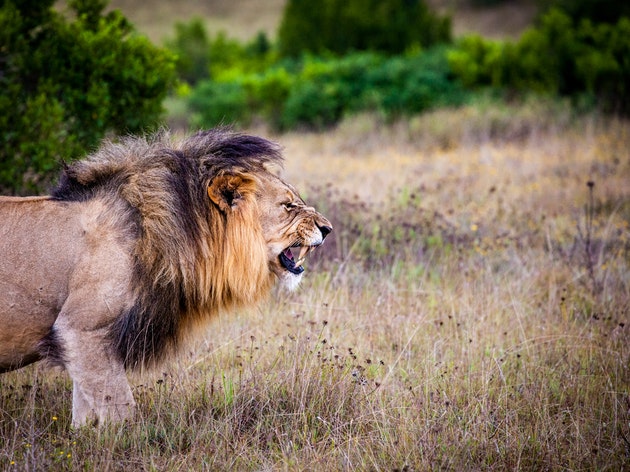野生の馬はすでに地球上からいなくなっていた。この驚きの研究結果は、各英語メディアで記事化されました。当然のように存在する馬ですが、実は全ての馬は人間の手によって繁殖させられたもので、現在は純粋な野生の馬はいないのです。
今回はDaily Mailの”Wild horses are EXTINCT: Domesticated breeds are now the only ones to survive on the planet, according to shock DNA study”で英語学習を行いましょう。
野生の馬は絶滅していた!?驚きの研究結果
The last 'wild' horses is the world are not truly wild, according to a shock DNA study. Przewalski's horses, a breed thought to be the last 'wild' species, are the descendants of escaped once-domesticated animals. The research turns the mysterious origin of domesticated horses 'upside down', experts claim. DNA 調査の結果、すでに世界には野生の馬が存在しないというショッキングな事実が判明しました。これまでプシバルスキー馬は現存する最古の野生の馬だと考えられていました。しかし研究で、 このミステリアスな馬は野生の馬ではなく、元々飼いならされていた馬だと判明したのです。
【単語解説】
according to – ~によると
study – 研究
breed – 品種
descendant – 子孫
domesticate – 飼いならす
origin – 起源
upside down – ひっくり返す
世界をひっくり返す大発見
Przewalski's horses now number roughly 2,000 in Mongolia. But researchers this week upended that theory on an examination of the genomes of dozens of ancient and modern horses. 'Our findings literally turn current population models of horse origins upside-down,' said Professor Ludovic Orlando, a molecular archaeologist at the French National Center for Scientific Research who led the study. 現在プシバルスキー馬はモンゴルに約2,000頭います。 今週研究者たちは古代と現代の馬のゲノム解析しました。「我々の発見は文字通り馬の起源をひっくり返すでしょう」、フランス国立科学研究所の考古学者のLudovic教授は述べます。
【単語解説】
mongolia – モンゴル
theory – 仮説
genome – ゲノム
ancient – 古代の
modern – 現在の
finding – 発見
literally – 文字通り
population – 人口
archaeologist – 考古学者
Their study claims that Przewalski's horse, saved from extinction in the 20th century, descended from horses domesticated in northern Kazakhstan some 5,500 years ago by people in what is called the Botai culture. This suggests all wild horses are now extinct. The research showed that the Botai culture offers the earliest-known evidence for horse domestication, but that their horses were not the ancestors of modern domesticated breeds. 'The world lost truly wild horses perhaps hundreds, if not thousands of years ago, but we are only just now learning this fact, with the results of this research,' said University of Kansas zooarchaeologist Sandra Olsen, one of the researchers. The history of people and horses has been intertwined for millennia. 彼らの研究では、20世紀にプシバルスキー馬は絶滅から救われたと主張します。ボタイ文化と呼ばれる人々の手によって、5,500年前カザフスタン北部で飼いならされていた馬は救われたのです。 このことが意味するのは、地球上に野生の馬はもはや存在しないということ。 研究はボタイ文化には馬を飼いならしていた証拠があったと示しています。しかし彼らが飼っていた馬は、現代飼いならされている馬の祖先ではないのです。「数百年前もしくは数千年前、既に世界には野生の馬が存在していなかったかもしれません。」
【単語解説】
claim – 主張する
extinction – 絶滅
known – 知られた
evidence – 証拠
intertwine – すり合わせる
人間にとって馬は重大なイノベーションだった
'Horse domestication was a critical innovation,' said archaeologist Alan Outram of the University of Exeter, who helped lead the study. 'Horse riding was the fastest form of transport for thousands of years, from the Copper Age over 5,000 years ago until the steam train. 'Even then it was really only the motor car that replaced it on a wide scale. Horses revolutionized human mobility, trade and modes of warfare,' Outram added. Przewalski's horse, named for a Russian who described them in the 19th century, is relatively small and stocky. Like horses depicted in prehistoric cave paintings, it is dun-colored with a dark erect mane. 「馬を飼うことは重大なイノベーションでした。」考古学者のAlan教授は述べます。 「数千年前、世界で最も速い交通手段は馬に乗ることでした。これは5千年前から蒸気機関車が登場するまでの間のこと。つまり数千年間、馬は世界一の交通手段だったのです」 「現在では車が主流となっていますが、馬が人間の移動手段に革命をもたらしたのは言うまでもありません。また馬のおかげで貿易や戦争手段も発達したのです。」 プシバルスキー馬という名前は19世紀にロシア人によってつけられました。先史時代の洞窟の壁画のように、プシバルスキー馬は比較的小さく、黒いたてがみが垂直に立っているという見た目の特徴があります。
【単語解説】
innovation – 革新
transport – 運送
replace – 取り替わる
warfare – 戦い,戦争
relatively – 比較的
depict – 描く
prehistoric – 先史の
cave – 洞窟
erect – 垂直な
まとめ
今回の発見で判明したのは、野生の馬と考えられていた種は、実は人間の手から逃れた野生化した馬だったということ。つまり野生の馬ではなかったのです。プシバルスキー馬は現存する馬の中で最古の家畜馬の子孫。それにしても野生の馬がすでに絶滅していたとは驚きでした。馬と人間の関係性は想像以上に長く深いようです。
![EnglistA [イングリスタ]](https://www.english360.jp/mgp2/wp-content/uploads/2015/09/site-title.gif)


